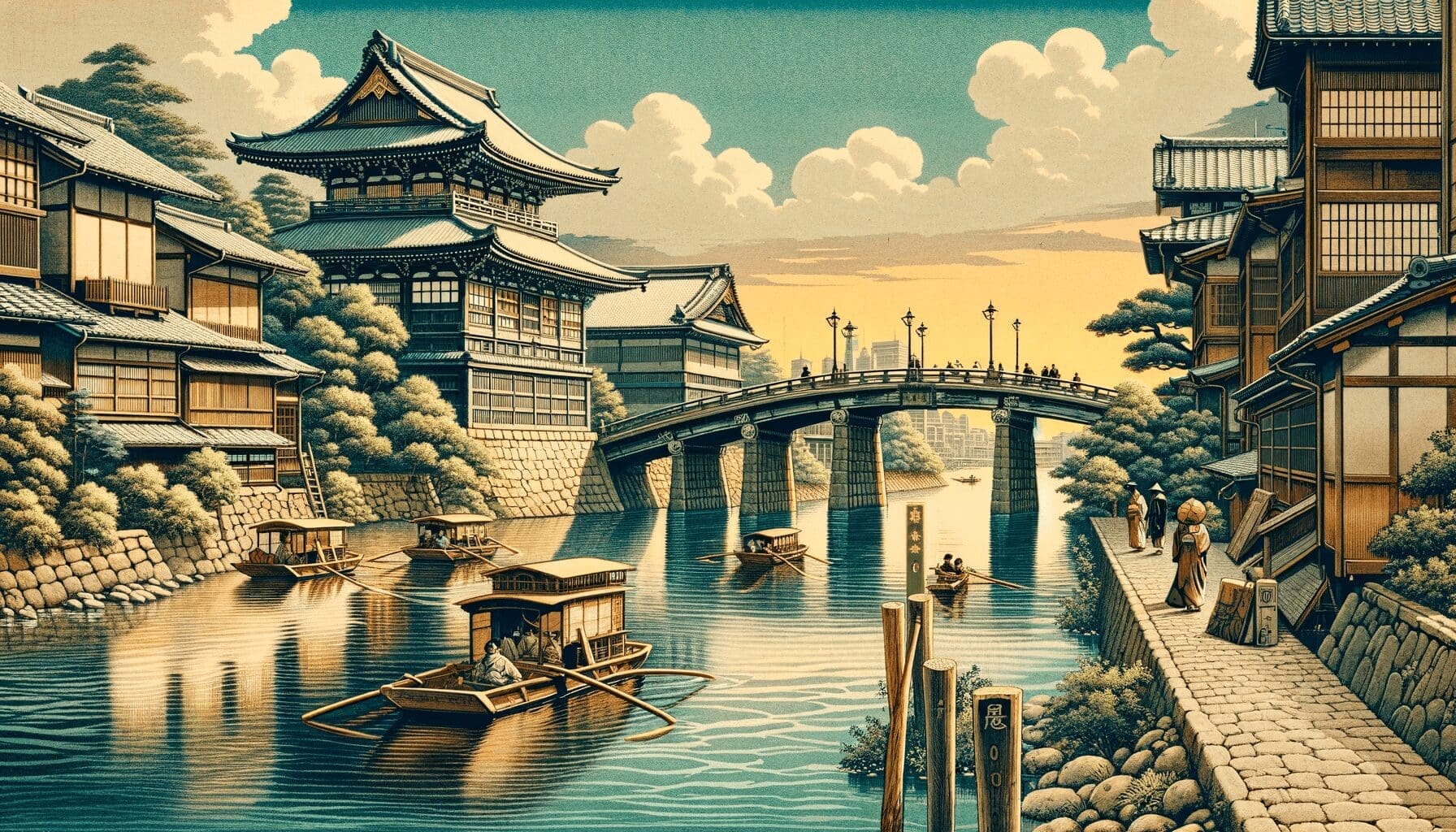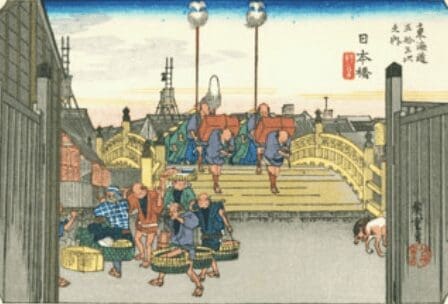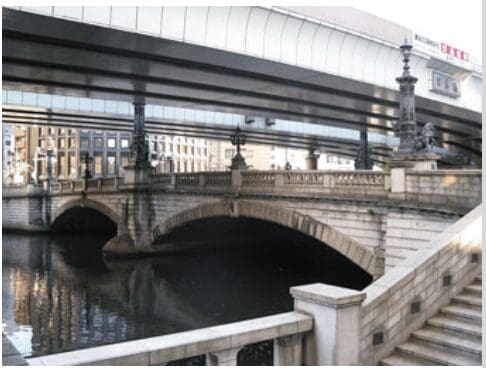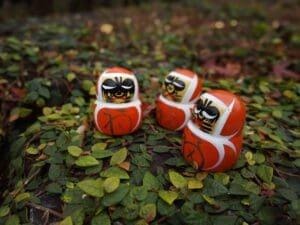
In the heart of Tokyo, amidst the bustling metropolis where modernity and tradition converge, stands a bridge that embodies the very essence of Japan’s rich history and culture – Nihonbashi. Known as “Kilometer Zero,” this iconic bridge serves as a symbolic heart of the nation, from which all distances in Japan are measured. As we traverse the storied path of Nihonbashi, we discover a bridge that has witnessed centuries of transformation and continues to beat as the heartbeat of Tokyo.

The story of Nihonbashi dates back to the early 17th century during the Edo period, when Tokyo was known as Edo. Constructed in 1603, this bridge quickly became a vital hub for merchants and travelers alike. It marked the starting point of the Five Routes, major roads that connected Edo to various corners of Japan. Nihonbashi’s significance in facilitating trade and travel was unmistakable, and it stood proudly as the gateway to the nation.
The Bridge’s Transformation: While the Nihonbashi of today may not be the original structure, it remains a testament to Japan’s historical tapestry. The current stone bridge, constructed in 1911, bears intricate details and sculptures influenced by the Western aesthetics of the Meiji Era. Yet, beneath its modern façade, the spirit of the Edo period endures, preserving the bridge’s historical importance.

Wandering the vicinity of Nihonbashi is akin to stepping into a living museum. Centuries-old shops showcase traditional Japanese crafts alongside contemporary department stores, illustrating Japan’s harmonious blend of old and new. A prime example is the Mitsukoshi department store, once a humble kimono shop in the 17th century, now an emblem of Japan’s fusion of tradition and modernity.
Culinary Delights: Nihonbashi’s culinary scene mirrors its historical richness. Traditional sushi restaurants coexist with trendy cafes, offering a gastronomic journey through Tokyo’s evolution. The nearby Tsukiji Market, a paradise for seafood enthusiasts, further enhances the area’s vibrant food culture.

While Nihonbashi thrives amidst its urban surroundings, challenges persist. An overhead expressway, erected for the 1964 Tokyo Olympics, casts a shadow over the bridge, a stark symbol of modernization. Efforts are underway to relocate the expressway underground to restore the bridge’s visibility and dignity.
VI. Kilometer Zero’s Legacy: Nihonbashi, or Japan Bridge, transcends mere bricks and mortar; it symbolizes Tokyo’s remarkable journey from a fishing village to a global powerhouse. It encapsulates Japan’s cultural evolution, serving as a point of convergence for the nation’s past, present, and future. As the sun sets over Tokyo, casting a golden glow over Nihonbashi’s waters, one cannot help but feel connected to the countless souls who have crossed this historic bridge. Kilometer Zero is more than a point on a map; it’s a gateway to Japan’s rich tapestry of history and culture.

Nihonbashi’s enduring legacy as “Kilometer Zero” stands as a testament to Tokyo’s evolution and Japan’s cultural resilience. It invites travelers and locals alike to traverse its storied path and immerse themselves in the nation’s history and culture. In the heart of Tokyo, Nihonbashi remains a timeless symbol of connection and continuity, where the past, present, and future converge in harmony.


